by Alex Dueben

Her new book, Out on the Wire: The Storytelling Secrets of the New Masters of Radio, is in some ways a sequel to a comic she made in the 1990s. Radio: An Illustrated Guide depicts the creation of an episode of audio show This American Life. Though it was never a bestseller or widely available, it remains an important and influential text. In Out on the Wire, with the help of Ira Glass, Abel visits many other radio shows and audio producers to examine the medium, consider its unique methods of storytelling, and discern what cartoonists and other kinds of content creators can learn from radio.
Alex Dueben: In Out on the Wire, you talk about how you came to make Radio: An Illustrated Guide back in the 1990s. How did you end up making this new book?
Jessica Abel: Every year I would get a royalty statement from Radio which showed me that people were reading this thing. I would be out in the world at comic conventions and other random places and people would figure out that I did this book. They’d be really excited about it. It was so strange because Radio was never in stores– it was never regularly available and so it was a book that was everywhere and nowhere at the same time. [laughs] I didn’t think about it for a long time. It was a finished project and I did a lot of other things.
At some point, I just started running across more people who were affected by it. I met a guy in Finland whose brother became a radio producer because of my book. Since then, I’ve met a couple of other people who became radio producers because of my book. It just felt like radio production is a subject that is powerful and deserves revisiting. Plus, while I’m very happy with Radio: An Illustrated Guide and very proud of it, it has a pretty limited scope. It basically walks you through the making of one episode of This American Life.
Dueben: Do you think of comics and audio as having a lot of similarities?
Abel: They’re similar in their level of the necessity of editing and compression. They’re also very similar in the way that you have to think about voice.
Dueben: Comics and audio are also narrative forms that are really shaped by their limitations.
Abel: I don’t know of an art form that isn’t. That is the nature of art, I think. That’s the nature of creating anything. I don’t think we’re all fully aware of that, but I’m married to Matt Madden so I’m extremely aware of it. [laughs] We all work within constraints, and the constraints in many ways are what actually make our work better and more interesting. You have to fight against these limits, that are in some cases inherent to the medium, and that’s where your true creativity comes out, through really battling those limits.
Dueben: That especially comes out in some sections like chapter 4, where you discuss sound and try to visually explain how sound is used.
Abel: There are things that I can’t convey about radio in comics, but my central interest in this form of radio, this form of audio, is really not on the surface. It’s beneath the surface. That’s kind of true of comics too. Of course, I love to read finished comics, but the thing that I love to read the most in terms of talking about the art form is structure– how things are put together and what elements make it work. That’s also my core interest as a teacher. The vast majority of what I want to talk about is completely transferable– and understandable, even though I’m totally not an expert…although my podcast is out today. [laughs]
Dueben: Throughout the book, you talk about storytelling with many people. How much of the book was mapped out in your head at the start, and to what degree did it change as you were doing it?
Abel: My impulse is to say that none of it was planned, but that’s probably disingenuous. At first I thought I would follow something chronologically the same way I did in Radio: An Illustrated Guide, but the stories I had available didn’t work out that neatly. More importantly, I think because I was following– depending on how you look at it– three to seven different shows and talking to all these different people, I didn’t want to go and tediously revisit the exact same process over and over again.
I ultimately reworked my whole approach after I’d done much of the research and was writing. From the beginning though, I knew that I was looking for the big ideas behind how these guys think of story. I knew that there would be things people would be able to tell me. I knew there would be things like characters and scenes and stuff like that, but I really didn’t know what specifically they were going to tell me, and I certainly didn’t know what the chapters of the book were going to be. I was not fitting things into a box; I built the box.
Dueben: One thing you did really well is explain how the producers approach Snap Judgement, why it sounds the way it does. The show’s tagline is storytelling with a beat, but you explain how that plays out and the way they think about that.
Abel: Yeah, I add in a little more detail as to what they’re actually talking about when they say that.
Dueben: And how it differs from others shows like This American Life.
Abel: In some ways. I think there’s plenty more I could say about that. I think you need to be a little familiar with Snap Judgement and This American Life to then be able to extrapolate from what I said and get all the information I put into the background about that. I think it’s in there, I think you’re right. However, it’s not something I tried to foreground specifically except in the one moment where I’m talking about reflections and Glynn’s objections and his feelings about reflections versus standard story, but I think you can find out what they’re all about. In the sound chapter, you see them building a story and learn how they think about transitions and scenes.
Dueben: To a certain degree you are assuming some knowledge from the reader.
Abel: I am and I’m not. I think that many people are not familiar with these specific shows when they read this book. Thus far though, there have been plenty of people who have read it and knew This American Life. Ultimately, you do not need to be an expert to read the book and get something out of it. I’m living in France, and it’s interesting that the kind of radio I discuss does not exist there. I’ve had to explain what I’m doing multiple times in French– and it’s not easy. It’s not an easy thing to explain. It’s an art form that has a lot of particularities and we who are familiar with it are not necessarily aware of these unique attributes most of the time. I’ve been talking to a radio producer in France about possibly trying to do a translation project.
Dueben: Did you have a list of shows and people to talk with when you started, or did it grow as you spoke with people and they put you in touch with others?
Abel: I had a list of core shows initially. Ira and Seth Lind, his assistant, helped me get in touch with them and got me introduced to the right people. The core shows I started with were Snap Judgement, Planet Money, Radiolab, and The Moth. The Transom Story Workshop came up really early. I talked to Jay Allison about The Moth and he said, “you should come up to the workshop.” So, I did– that was very influential and very helpful. I got in touch with Roman [Mars] because I was out at Snap Judgement and he had been involved in the initial stages of Snap Judgement. I actually talked to him initially because of that show back in 2012 when he was on the upswing 99% Invisible. For Radio Diaries, I met Joe Richman at a This American Life event and he really liked the original book so I was like, can we talk? Basically the group was fairly known.
Dueben: I was wondering about how you came to shadow the Transom Story Workshop. I know a few people who have studied under Rob Rosenthal.
Abel: Lucky people. He’s amazing. I got in touch with Jay to see if I could interview him about producing The Moth Radio Hour. The spring class was in progress when I got in touch with him and he said you should come up here and see this. It was right at the beginning, in fact I hadn’t even sold the book yet and I just rented a car and went up there.
One of the things I realized after the fact is that I have done a lot of representing of students and interns in these two books. I realize it’s for a very good reason, which is that they are learning the thing that I am learning. They’re learning the way I’m learning and they can explain things in a way that is really understandable, so that was really helpful for me.
Dueben: There is this idea that podcasts are just one person or a couple people talking into microphones. This does happen, but I’ve worked at a public radio station and you capture and convey how much of a collaborative process making radio can be.
Abel: I wrote a Transom manifesto about collaboration. This is my top takeaway from the book in terms of myself, in terms of other people and other kinds of narrative artists: we need to be talking to each other. I’ve always thought this. After teaching ten years at SVA, I’ve learned that classroom critique is so valuable. Students never know what they’ve got until they graduate and they lose it. That live critique, talking to people about your work out loud is so, so valuable. I’m really trying to with the podcast especially figure out a way to try to incorporate that for other people making narrative. “What can we do to make narrative better?”
Dueben: It can be exhausting to go through criticism, as you show in that Snap Judgement meeting.
Abel: It absolutely can. It’s important to be clear about that but it is so valuable.
Dueben: It’s exciting to have an interaction with another that helps you come to a new understanding of your own work.
Abel: People who will honestly look at what you’re doing and really look and pay attention is such a valuable thing. It’s rare. It takes a lot of attention and a lot of mental energy to be a critiquer as well as to be critiqued.
Dueben: So after all this, did you feel you had to make a podcast?
Abel: Had to? No. [laughs]
Dueben: When did you go, “I should make a podcast of my own?”
Abel: It was a funny process, actually. I was in my studio in December– there’s something about December because I make a lot of big decisions about directions in my life in December…it was mid-December and I was really frustrated because I had a very short deadline. It was a slog. I was mechanically going through a lot of artwork that was already planned, so I had a lot of brain space with which to think. I’m thought about blog posts and marketing the book. There are so many pieces of the interviews I conducted…so much information that I wasn’t able to get into the book. I had been saving it in my scrivener file and made a clips file of stuff that was great, but I just couldn’t use it. My plan was to do a series of blog posts about various ideas. Then I thought, “but I’ve got this audio. It’s not high quality, but it’s people’s actual voices. I’ll make a Soundcloud account and put these clips in there.”
At some point it was a major face palm moment, “I should make a podcast. Obviously. I have this great material. I should just do it.” I hesitated about it for a number of months, but it really was a no-brainer. It made total sense, even if it also felt like, “oh god, what am I getting myself into here” at the same time.
Dueben: Did you ever wonder if it was too meta to make a podcast about the making of a book about audio?
Abel: That’s just where I live. That’s what I do. [laughs] The whole book is so incredibly meta. Every minute of it had some moment of internal self-referentiality that I had to grapple with, so it’s not a new thing.
Dueben: I asked that jokingly, but of course the podcast is about much more than just the making of the book.
Abel: It’s not the making of it at all. The podcast is about making stories. It really is meant to be very actionable stuff about making stories–even more than the book is. The book is full of great ideas and lots of people expressing very clearly these big concepts. I think anybody could take it and make something actionable out of it to a certain extent, but it was never meant to be a textbook. It’s meant to be a really good read and interesting and engaging. One of the things I can do with the podcast is to take that a couple steps further and say, “okay, so we learned this and this and this, here’s some extra information, now what are you going to do with it?”
We have a group which we’re adding people to that’s going to be posting work. We hope, that’s the plan. The main episodes will be every two weeks and we’ll be doing live episodes where Matt and Ben and I will discuss some of the work that came in the community and critique it live.
Dueben: The book and the podcast really feel like an extension of the teaching you’ve done for so many years, the textbooks that you made with Matt, and other work you’ve been doing.
Abel: It absolutely is. It’s funny because I don’t think that I intended that at all. I didn’t come into this thinking, “I’m going to make an extension of my previous work.” It didn’t feel like that at all, but as I finish it, and especially as I’m doing the podcast, it’s ]coming full circle. I’m also realizing how influential doing Radio: An Illustrated Guide was on my own thinking about story and my own ability to teach. I did it in ‘99 and I started teaching regularly in 2001. I developed all of my teaching materials and approach and philosophy in the ensuing years and then wrote about it in Drawing Words and Mastering Comics which helped me codify and solidify what I thought. Coming back to this now it feels full circle. The other day, I was interviewed by one of my former students who’s now working at a magazine and she was saying, “this feels so familiar. I can hear your voice saying these things.” I replied, “it’s because I’ve said them all to you in real life!” [laughs] It was a funny moment. All meta. All very meta.
Dueben: Out on the Wire is your second book to come out this year. I’m sure a lot of people haven’t read Trish Trash because it hasn’t come out in English, but what is this book?
Abel: Trish Trash is a story about a 15 year old girl on Mars 200 years in the future who is dying to play hover derby, which is of course the #1 sport of the future. The problem is that Mars is a very screwed up place. There’s a corporation that owns most people’s debts and therefore owns them to a certain extent. She and her family are slowly sinking into a pit of debt like everyone else she knows. As a 15 year old she doesn’t care so much about that stuff but it really comes back to bite her in many ways so she’s forced to act and to fix things.
Dueben: And this is a series.
Abel: Yes it’s a three volume series of french albums.
Dueben: So you were writing and drawing Trish Trash and Out on the Wire at the same time?
Abel: Yes. I don’t recommend this, by the way. [laughs] I have to deliver the script for the third volume of Trish Trash and I have not had time to look at it in a month. Pretty soon I’ll be able to get back to it.
Dueben: Have you already finished the second volume of Trish Trash?
Abel: Yes I’m just finishing coloring and lettering.
Dueben: I know that you and Matt have kids so you must be really tired right now.
Abel: [laughs] Yeah. I try not to talk about it too much. Poor me. *world’s tiniest violin*
Dueben: You’ve worked hard for years to get to the point where you can get publishers around the world excited and saying, “we want you make different kinds of projects, fiction and nonfiction, in color, in black and white.”
Abel: Exactly. It wasn’t really good planning to do them both at the same time, but Trish Trash was a project that I had lined up years earlier. It didn’t work out with the artist I was working with so I ended up doing it myself. That pushed it back a couple years so they ended up on top of each other. It wasn’t really intentional.
You can find out more about Jessica Abel at her website. Out on the Wire: the Storytelling Secrets of the New Masters of Radio is out now. A new episode of her Out on the Wire Podcast is released every Monday!
The above content is reprinted from OUT ON THE WIRE: THE STORYTELLING SECRETS OF THE NEW MASTERS OF RADIO Copyright © 2015 by Jessica Abel. Published by Broadway Books, an imprint of the Crown Publishing Group, a division of Penguin Random House LLC.


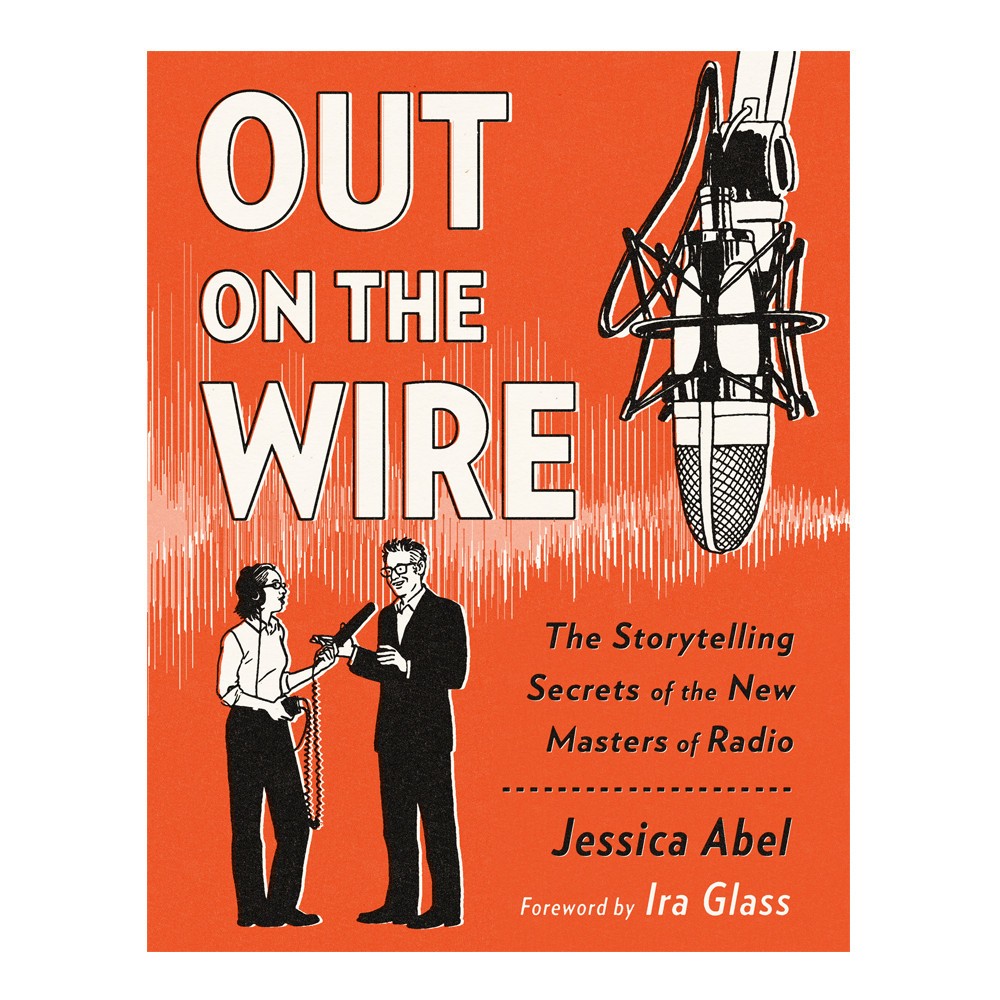
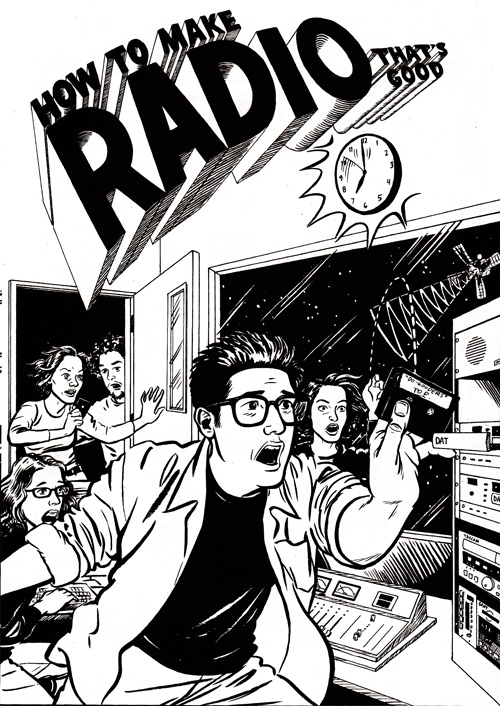
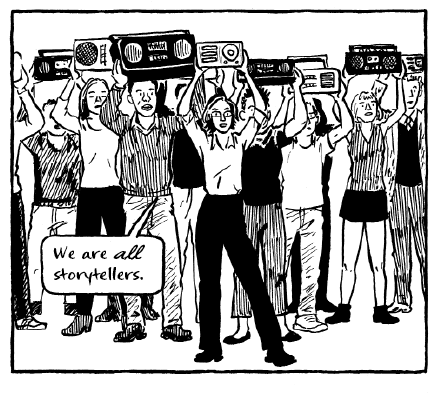
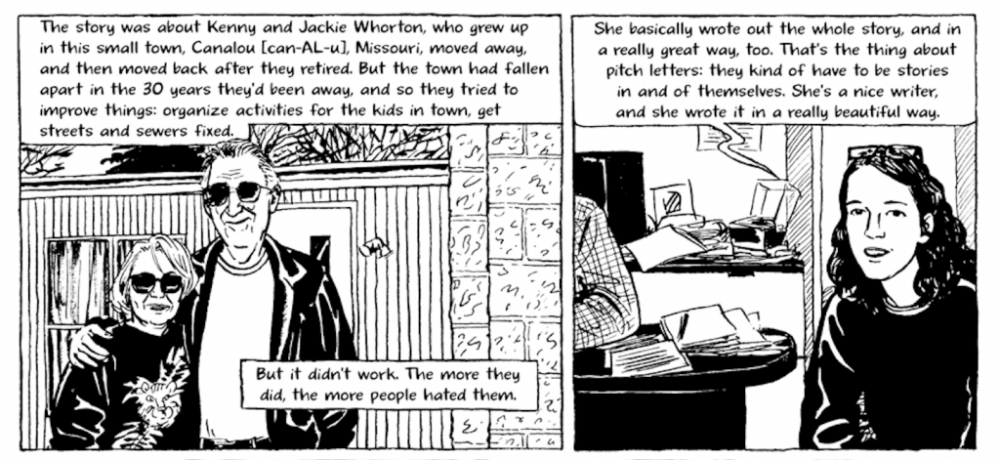
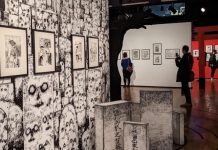
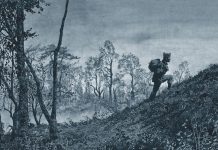
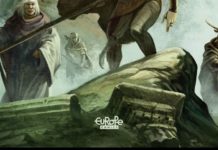



uh, beat editors, might want to check the photos…that’s not Jessica Alba…
Comments are closed.